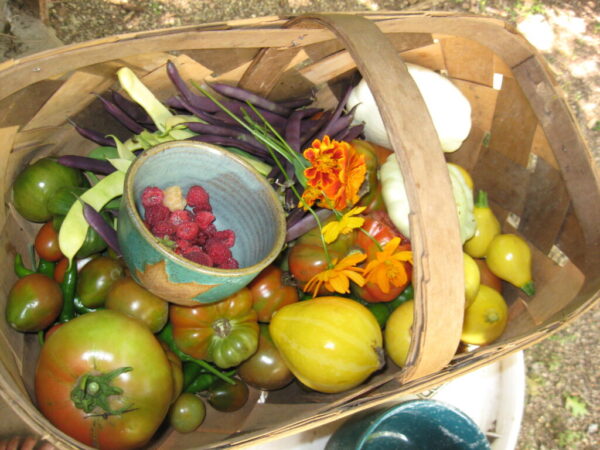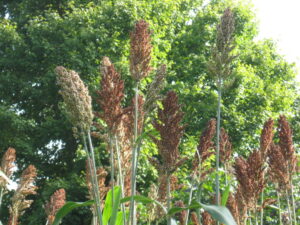- Like
- Digg
- Del
- Tumblr
- VKontakte
- Buffer
- Love This
- Odnoklassniki
- Meneame
- Blogger
- Amazon
- Yahoo Mail
- Gmail
- AOL
- Newsvine
- HackerNews
- Evernote
- MySpace
- Mail.ru
- Viadeo
- Line
- Comments
- Yummly
- SMS
- Viber
- Telegram
- Subscribe
- Skype
- Facebook Messenger
- Kakao
- LiveJournal
- Yammer
- Edgar
- Fintel
- Mix
- Instapaper
- Copy Link
 A version of this column first ran in the Roane County (WV) Reporter and Times Record. Support local journalism! Subscribe to your local newspaper. This is one of a series of blogs for new gardeners. Start reading the whole series here: Part 1.
A version of this column first ran in the Roane County (WV) Reporter and Times Record. Support local journalism! Subscribe to your local newspaper. This is one of a series of blogs for new gardeners. Start reading the whole series here: Part 1.
What do you plan to grow in next year’s garden? If you ordered from catalogs this year, you should be starting to get 2021 catalogs in the mail now. If you didn’t, you can ask, and any company you’re interested in will send you a free catalog. You can also look at online catalogs, and order on line, but I like sitting back in a comfortable chair perusing and comparing offerings.
How do you decide which vegetables (and fruits) to devote garden space to? There are many criteria; here are my suggestions.
Number one is the question of what you, and your family, like and will eat. There isn’t much point in growing something full of nutrients, beautiful and healthy, harvested at the peak of perfection, if it’s going to take up space in your refrigerator until it rots and then go into the compost bin. It’s possible that you can grow something for someone else, for trade or gift—but if no one is going to eat a vegetable (or at least enjoy the flowers—which should also foster bees or other beneficial insects), it isn’t worth the space. This criterion should also influence how much space you devote to different crops.
A related question is whether high quality offerings of the vegetable are available. That is, if it’s available all the time, cheap, and not likely to bear poisonous residue from pesticide sprays, you may prefer to buy rather than grow a given item. If all you can buy are withered old produce, or tomatoes that were picked hard and green and are now tasteless and lacking in vitamins, then this is a good item to grow yourself. I was told that potatoes are not only heavily sprayed, but they imbibe the toxins into the tubers so peeling them doesn’t make them safe. I try to grow most or all of my potatoes.
Another consideration is ease of cultivation. If every time you try to grow a vegetable it does poorly, maybe that vegetable is not a good choice. I grow less cabbage and broccoli every year because the cabbages usually fail to head up and the broccoli heads up all at once if it does at all. This was a reliable crop for me when I gardened in the “holler” in Calhoun County, but for some reason I can’t do well with these crops most years on the ridge so they don’t get much space in my garden. However, this family of plants offers important nutrients; I find I do very well with bok choy, growing a few in the spring and then more in the fall. This fall, I harvested one, shook off the snow and laid out the cleaned leaves and they filled my entire counter, must have been 30 or 40 big leaves and succulent stalks. I’ve found an open-pollinated variety that reliably produces big heads (Prize). I’m also trying Chinese cabbage, which seems to do best grown in fall.
Speaking of “open pollinated” varieties, this may be a consideration if you want to save seeds. It means the variety is not a hybrid, and so its seeds will produce plants like itself. Hybrids will produce offspring with varying characteristics, mostly inferior to the parent. You may want to choose open-pollinated varieties as insurance even if you don’t now plan to save seeds, in case seed becomes less available—or your income drops.
Such possibilities may also influence your crop choices. If you had to rely on your garden for a significant part of your food, you would want it to include things with lots of calories, with protein, with necessary vitamins, and with good storage capabilities. High on the list for all these considerations are potatoes and sweet potatoes, both high in calories and the potatoes containing quite a bit of protein. Both are fairly easy and reliable crops. Potatoes will keep all winter in cool, moist, dark conditions like a root cellar or unheated basement; sweet potatoes like slightly warmer, dry and also dark spaces—mine do fine on my pantry shelves. Winter squash, like sweet potatoes, offer carotene (vitamin A) and calories and many are long keepers on a dry shelf or under a bed. Sweet potatoes and squash take a lot of room but not a lot of care. Potatoes can be harvested as early as August or as late as December…they keep well in the ground if mice don’t eat them, but if you harvest some of them early, you can use the space for a later crop.
Garlic is also supposed to produce a lot of calories in a small space—I grow it because we eat it in practically every meal (onions too). Garlic and onions are good choices because they grow over the winter (garlic) or starting in very early spring (onions) and are harvested in early summer, yielding the space to something else.
Another consideration is growing something because it helps the rest of the garden. This could be herbs, which harbor pollinating insects and predator bugs that eat the pests. It could also be legumes (peas and beans mostly) which can fix nitrogen. They will use the nitrogen themselves if grown to maturity but at least they won’t need nitrogen already there. You can also grow leguminous cover crops (vetch or winter peas or clover), over winter to leave nitrogen for next year’s crops.
Finally, if you are trying to interest children in the garden, I suggest radishes—because you get a crop so quickly—and tall sunflowers and perhaps pumpkins (because children are impressed by size). Another good choice is berries, because they will enjoy harvesting these. But most berries planted in spring will require a year or more to produce.
Read the rest: Part 1. Part 2. Part 3. Part 4. Part 5. Part 6. Part 7. Part 8. Part 9. Part 10. Part 11. Part 12. Part 13. Part 14. Part 15. Part 16. Part 17. Part 18. Part 19. Part 20. Part 21. Part 22. Part 23. Part 24. Part 25. Part 26. Part 27. Part 28. Part 29. Part 30. Part 31. Part 32.













